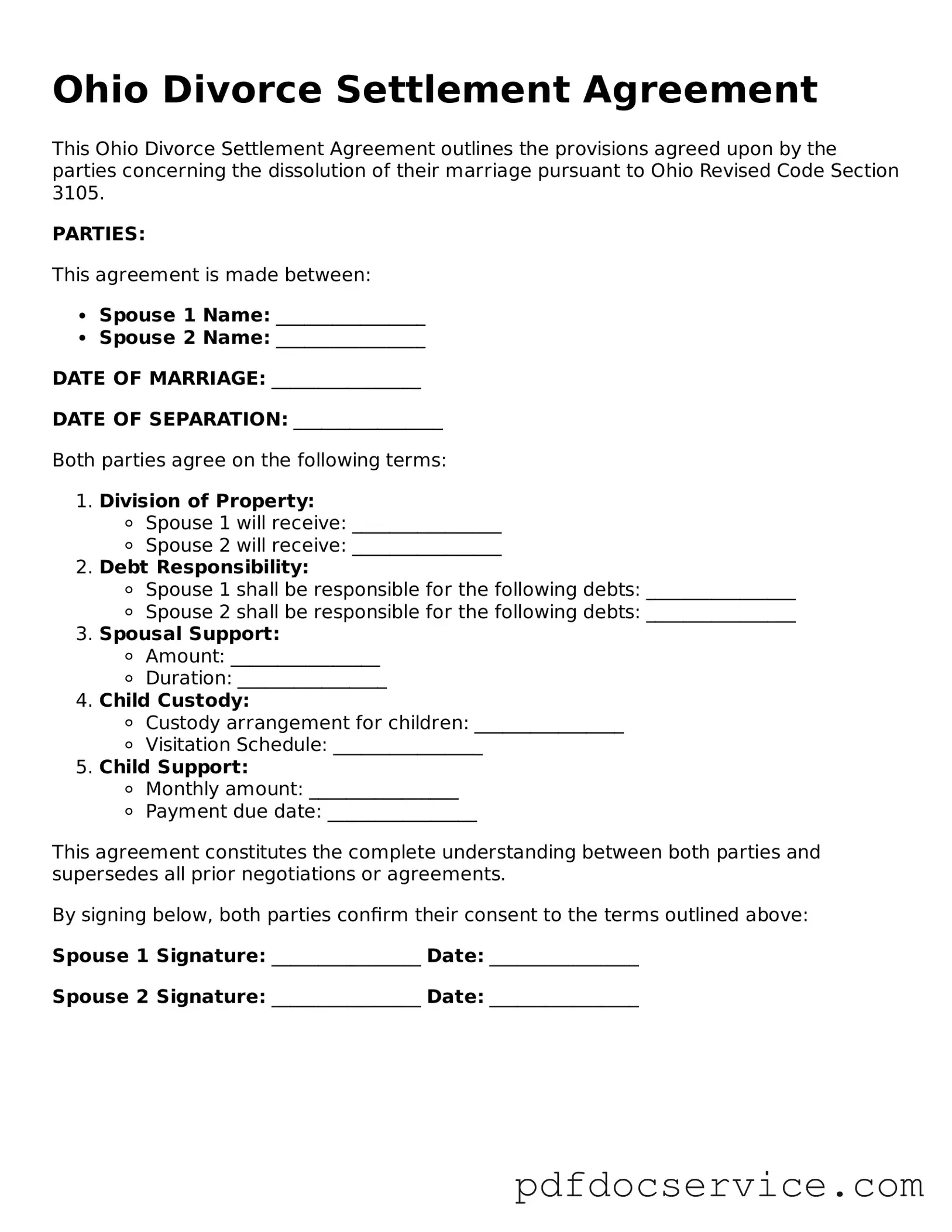What is a Divorce Settlement Agreement in Ohio?
A Divorce Settlement Agreement is a legal document that outlines how you and your spouse will divide your assets, debts, and responsibilities after a divorce. It serves as a comprehensive plan detailing the terms of your separation, including child custody, visitation rights, and support obligations if applicable. This agreement is crucial as it helps both parties understand their rights and responsibilities moving forward.
Why is a Divorce Settlement Agreement important?
This agreement is important because it provides clarity and structure during a challenging time. It helps prevent future disputes by clearly defining how assets and responsibilities will be handled. Additionally, having a formal agreement can expedite the divorce process and may be required by the court before finalizing the divorce.
What should be included in the Divorce Settlement Agreement?
Typically, a Divorce Settlement Agreement should include:
-
Division of property and debts
-
Child custody arrangements
-
Child support obligations
-
Spousal support (alimony) details
-
Visitation schedules
-
Any other agreements relevant to the divorce
Including these elements ensures that both parties have a clear understanding of their agreements and obligations.
How do I create a Divorce Settlement Agreement?
Creating a Divorce Settlement Agreement involves several steps:
-
Gather all financial documents, including bank statements, tax returns, and property deeds.
-
Discuss and negotiate terms with your spouse regarding asset division and other responsibilities.
-
Draft the agreement, ensuring all terms are clearly stated.
-
Consider having a lawyer review the document to ensure it meets legal standards.
-
Sign the agreement in front of a notary public.
Following these steps will help ensure that your agreement is thorough and legally binding.
Can I modify a Divorce Settlement Agreement after it is signed?
Yes, you can modify a Divorce Settlement Agreement after it is signed, but both parties must agree to the changes. If circumstances change—like a job loss or a significant change in income—it may be necessary to revisit the agreement. Modifications usually require a formal process and may need to be approved by the court.
Do I need a lawyer to draft a Divorce Settlement Agreement?
While it's not legally required to have a lawyer draft your Divorce Settlement Agreement, it is highly recommended. A lawyer can provide valuable advice, ensure that your rights are protected, and help navigate any complex issues that may arise. If both parties agree on the terms, you may choose to draft the agreement together, but legal guidance can help avoid pitfalls.
How long does it take to finalize a Divorce Settlement Agreement?
The time it takes to finalize a Divorce Settlement Agreement can vary widely. If both parties are in agreement and negotiations go smoothly, it may take a few weeks. However, if there are disputes or complications, it could take several months. The key is open communication and a willingness to compromise.
Where do I file the Divorce Settlement Agreement?
You typically file the Divorce Settlement Agreement with the court that is handling your divorce case. This is usually done at the same time you file for divorce or during the proceedings. Make sure to keep copies of the signed agreement for your records and provide copies to your spouse and any legal representatives involved.
